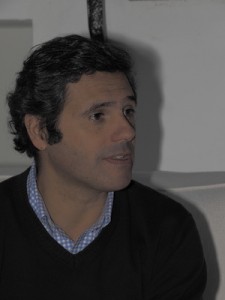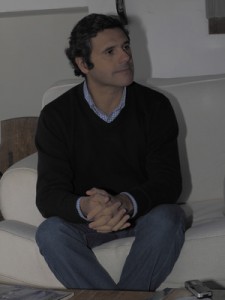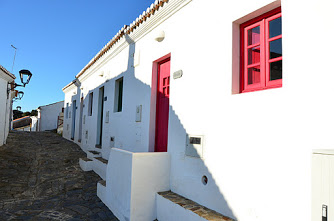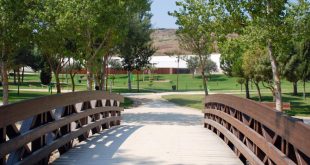 António Ferreira is the entrepreneur responsible for Pedralva Village tourism project. Following a dozen years working in publicity and strategic planning, and somewhat “fed up with the uninteresting world and selling things that were just not necessary”, he decided to take a new path in life. Already aware of the region and its tourism potential, in visiting Pedralva Village, he discovered the opportunity he had been searching for. He set up a company with four friends and advanced with the project. And, as he said, “here we still are”.
António Ferreira is the entrepreneur responsible for Pedralva Village tourism project. Following a dozen years working in publicity and strategic planning, and somewhat “fed up with the uninteresting world and selling things that were just not necessary”, he decided to take a new path in life. Already aware of the region and its tourism potential, in visiting Pedralva Village, he discovered the opportunity he had been searching for. He set up a company with four friends and advanced with the project. And, as he said, “here we still are”.
ECO123: What added value did the Pedralva Village restoration generate?
António Ferreira: There is one very important aspect: where the restoration gets done. We are located in a place that gets referred to as low density and therefore more susceptible to desertification. In such places, whatever the project, however small it might be, proves of extreme relevance. This is a land made up of thousands of small economies. When we recommend to our clients that they buy their fish from the fishermen, we are helping that particular family. And if we extend this to the small grocer’s, the restaurant or the person hiring out the bikes, we demonstrate how the restoration of urban settlements in these territories, while not resolving everything, does, in fact, represent the first step on the way to halting desertification. I would nominate this as the most important of all aspects.
The easiest support that you were able to obtain came from the Vila do Bispo Council. Did you encounter difficulties in putting the project into practice?
The council’s participation consisted of an investment that amounted to close to one million euros invested in external restoration. At the time, there was scope for village restoration funding of between 60% and 70%. And, to the council, restoring a village at the cost of €300,000 or €400,000 is a good deal. This was also our foundation to ensure that the other houses also got rebuilt. Today, we see houses that are not ours and that only got rebuilt because the village got some life back.
Nevertheless, when attempting to access other sources of funding and when explaining the project to QREN (1) or similar entities, we discovered that it did not fit into the forms. They might understand what a hotel in ruins is, a bankrupt resort, a cruise liner that does not cruise. However, restoring villages, heritage, converting a monastery into a restaurant, everything related to innovations involving physical spaces do not work, do not fit into the forms. And that fact serves as a major drag on tourism innovation.
However, has the project gone well?
 It has. In winter, we had living here with us a British tour operator – two people, thirty bikes, a minibus. And people are always, always arriving. And there are dozens more like this operator, enough to provide clients here and all over the place. This product has a market and is going to be successful, this line of nature, sustainable, ecological tourism. We only experience the difficulties of those who are a bit further ahead and opening up the pathway.
It has. In winter, we had living here with us a British tour operator – two people, thirty bikes, a minibus. And people are always, always arriving. And there are dozens more like this operator, enough to provide clients here and all over the place. This product has a market and is going to be successful, this line of nature, sustainable, ecological tourism. We only experience the difficulties of those who are a bit further ahead and opening up the pathway.
And targets for the future?
Above all, that involves consolidating the project. One day, we shall look back, when this has a really high level of occupation, and understand just how much easier it would have been if more people had helped out and tourism was not so directly focused on just two products – beach and golf – when we have such a large Algarve, so big, rich and so very different. And that’s what clients want, they want different products.
 Eco123 Revista da Economia e Ecologia
Eco123 Revista da Economia e Ecologia


